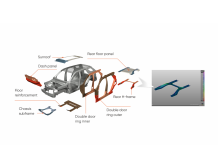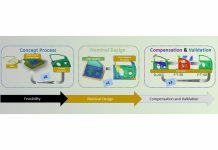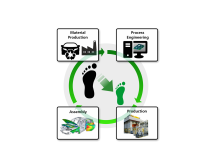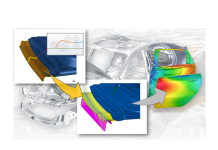And Clues for Job-Seeking Students Looking to Stand Out
Whenever I see young minds entering the building, I am immediately reminded of my early career-seeking days. I think back to being a nervous young graduate, doing my very best to get a foot in the door and kick-start my career. We’ve all had embarrassing job-interview fails that left us wondering, Why on earth did I say that in my interview?
Fast-forward to our present role as career professionals and it is easy to forget where we started.
In the name of reminiscing, it was a true pleasure to host two students who recently joined us at AutoForm USA to undergo three days of training. I am sharing this rewarding experience with the readers of FormingWorld.com in the hopes of sparking reflection on your own past college days. I also aim to inform any interested career seekers that opportunities for free training in sheet metal simulation are up for grabs.
Of the two attendees, one was a mechanical engineering student from Michigan Tech University, whose father works at FCA. The other student from Oakland University was working on his master’s in industrial engineering and recently started using AutoForm for a university project.
They both share future aspirations of working in the automotive industry; flashbacks of my own early days reminded me that the training atmosphere was, admittedly, a little awkward at first. Then it occurred to me that this initial awkwardness never entirely subsides, even for those of us who have served in automotive companies for years. Besides, we are all engineers here…

Fig. 1: Social distancing? Check!
The ice broke within the first two hours, giving way to a laid-back atmosphere that allowed us to all enjoy the training together. It became more like a seminar really, because we let their natural inquiry direct our path through some brilliant and thought-provoking questions.
Our training started off with stamping fundamentals, covering how everything works in reality. They saw animations of dies going up and down, trim steels, and everything we do with production intent, such as the use of transfer equipment. A fantastic discussion flowed on reality vs. simulation and the ideal of engineering according to the digital master.
The ensuing hands-on software training lasted the remaining two and a half days. The students were taken through a crash course in AutoForm 101, following a similar structure to AutoForm’s ProcessEnginnering class offered to our customers.
We started with forming a beer can, followed by a fender part. In practice, they built everything through die face, including the addendums, and completed every step necessary to make a part that can be manufactured in the real world. Despite the strict time limitation, we covered advanced topics like making draw dies and modeling class-A surfaces, along with delving into our tube forming solution, which was a new experience for them. As you’d expect for any new user, the first few panels split entirely; but they continued to work hands-on and shortly achieved a green simulation on their own.

Fig. 2: The students worked on this crossmember part.
I couldn’t claim that they completed the three days competent enough to begin employment; but they certainly have a solid head start in our field compared to many of their peers, armed with the key functionalities.
It is always surprising what we can also learn from young minds. One of their questions prompted me to think, That’s a really useful idea. Why don’t we have that button? Consequently, I put in a request for that new feature to be added to our software following the training.
One of them also suggested an alternative approach to addendum design. I had to ponder it a while because I accomplish it a specific way simply because that was our company standard back when I learned toolmaking. After demonstrating how I do it, both students came up with alternative ways to achieve the same end. They used functionalities built into the software that support other lines of thought. It just goes to show, there is more than one way to skin a cat; I sometimes see similar innovations from customers. Admittedly, the method suggested by one of the students was far quicker to model, although we have yet to verify it with a real part. Whatever the outcome, we all experienced reciprocal learning, which is part of the reason training is so rewarding.
To cap it all off, one of the attendees even asked about an internship at AutoForm.
The student who asked is currently using AutoForm for one of his final college projects of processing a door inner. Naturally, the training enhanced his project, a testament to our College Days projects attracting some real go-getters. Interested students should not hesitate to reach out and enquire about similar training because the learning can amplify your career opportunities.
Besides, I remember my student days; you can always come along for the free lunch.
Here is the feedback from one of our attendees:

Contact us to find out about our training opportunities in the USA.
You may want to check out our related posts: “Why Work at AutoForm: 4 Solid Reasons and 4 Tips Before Applying,” and “Why Get AutoForm Certified Training: Be the Go-To Expert.”













